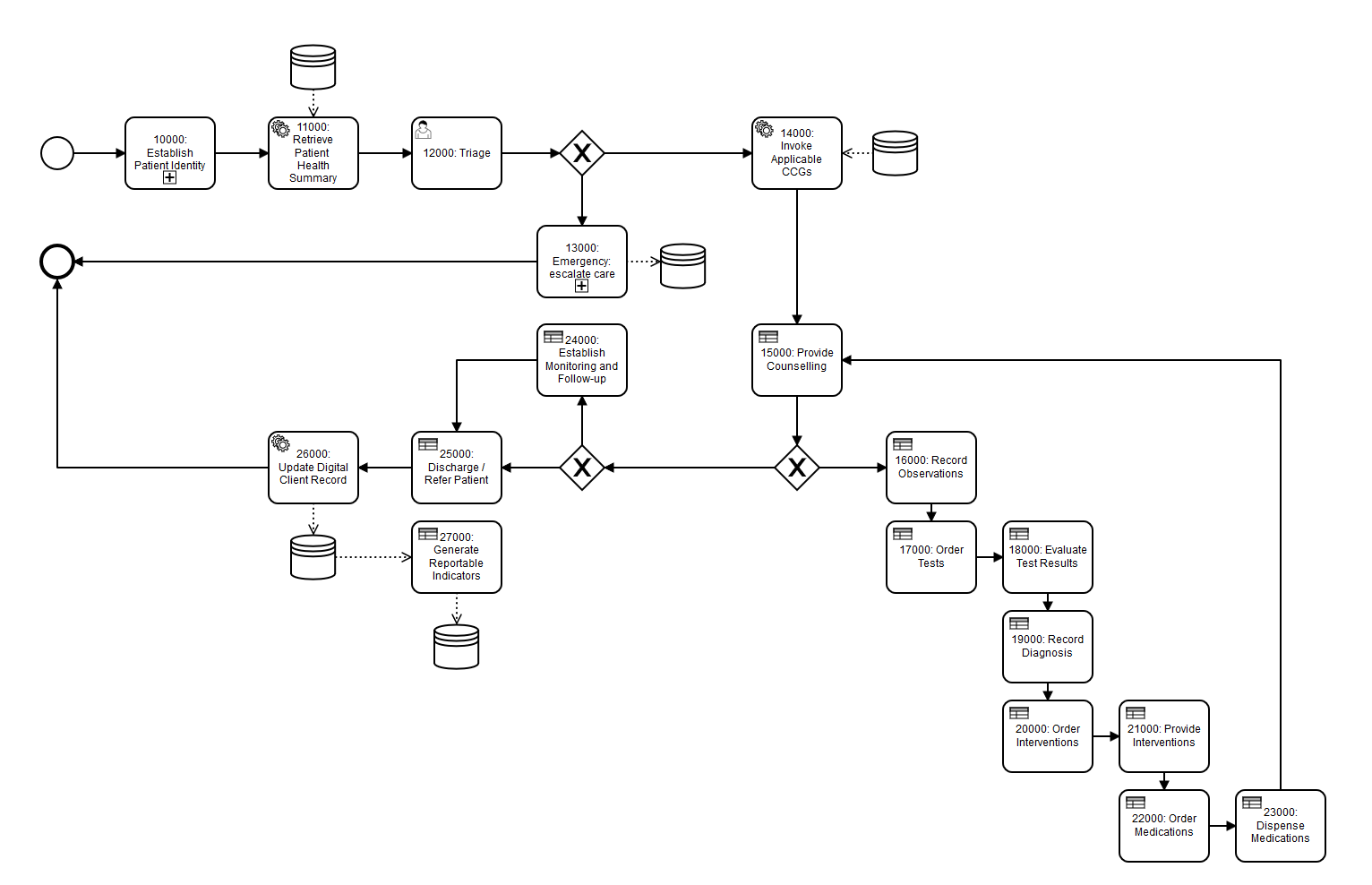This page is part of the Clinical Guidelines (v0.1.0: STU 1 Ballot 1) based on FHIR R4. The current version which supercedes this version is 1.0.0. For a full list of available versions, see the Directory of published versions 

NOTE: This is a proposed common pathway for ambulatory care processes. —
Identifying and recording the subject of care.
Performing basic triage to identify any signs that emergency care is required
Providing local urgent care based on the outcome of a triage process.
Gathering clinical history and performing and recording observations regarding the patient’s health (e.g. blood pressure, temperature, etc.).
Informing the subject of care about their treatment options and about how their ongoing care should be managed between visits. This is also where treatment constents are obtained and where health education is provided.
Conducting diagnostic tests, including lab tests, collection of samples, and other diagnostic tests. Lab testing may be done locally (e.g. HIV quick test) or the samples may require lab order fulfillment workflow.
Using available information from the patient’s history, current examinations, tests, and assessments to assist in developing a diagnosis.
Performing and recording observations, interventions, and treatments plans recommended by specific guidelines.
Administering medications, ordered by clinicians and dispensed by a pharmacy. Pharmacies may be local to the care facility or community-based, and involves supply chain transactions to support medication management.
Providing emergency care in trauma cases or as part of guildeline-based care escalation.
Providing acute or tertiary care, either as an escalation from emergency care, or from primary care due to guideline-based referral patterns.
Charging for services rendered, regardless of the mechanism of coverage.
Discharging or referring a patient, including the movement of patients through levels of care delivery (e.g. acute to primary, primary to community, etc.) or the enrollment of patients in guideline-based care programs (e.g. HIV, maternal, diabetes, injury rehabilitiation, etc.).
Recording and reporting patient-specific care management information which may be aggregated to develop reportable system management indicators at the priovider, facility, district, national, and international levels.
Monitoring and tracking progress for each patient based on guideline recommendations.
Providing alerts, reminders, and education to patients, providers, and health system managers.